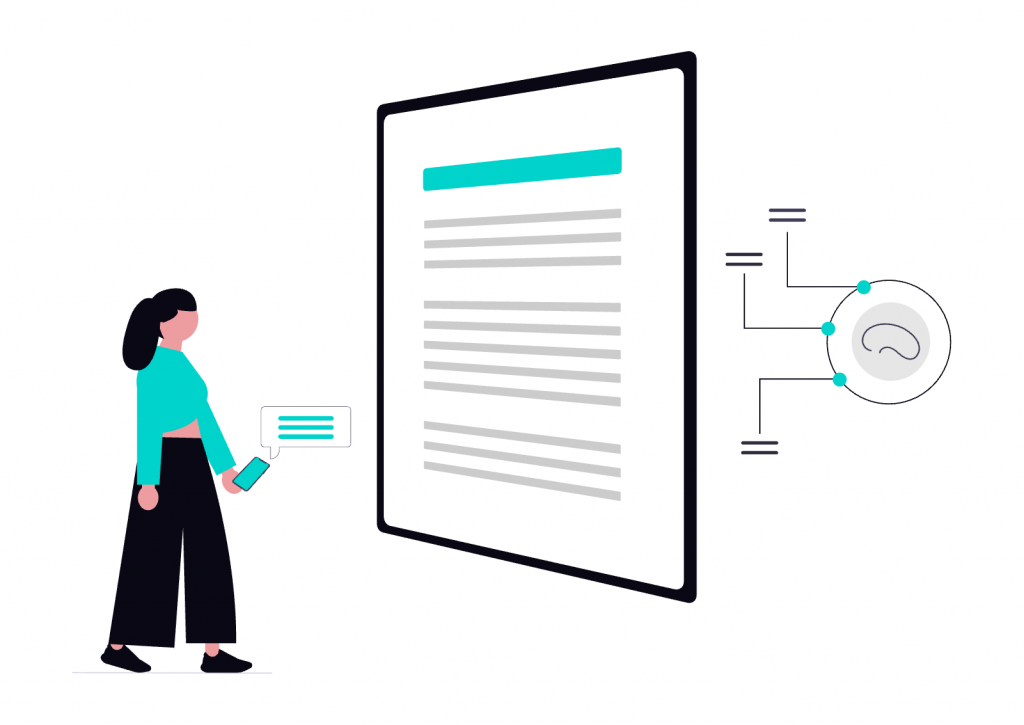
The shift to AI powered language translation is exciting for most of us working in localization. We’re no longer spending hours on repetitive translations, and we see so much improvement in the quality of the translated content. At POEditor, we’ve embraced this new era of translation technology, so allow us to share with you what your options are and how to get the most out of this feature.
The rise of AI-powered translation
Not long ago, machine translation mostly meant something that was technically translated, but not something you’d actually want to publish. Many sentences sounded way too awkward.
That’s changed dramatically with the rise of large language models (LLMs). These advanced AI systems (like the ones behind ChatGPT, Claude, and Gemini) understand context and nuance in a way traditional translation engines never could. They translate words and also interpret meaning.
AI-powered translation today can produce remarkably natural and accurate results, especially for general or well-structured text. And when you pair that with human review, it’s a game-changer for localization teams.
How AI-powered language translation works
As we mentioned above, modern AI translation systems rely on LLMs, which are deep learning models trained on massive datasets containing text from books, websites, articles, and even previous translations. These models learn patterns of meaning, as in how words relate to each other, how context shifts depending on phrasing, and how different languages express the same ideas in different ways.
This technology relies on transformer architecture, a type of neural network that can process entire sentences (or even paragraphs) at once, rather than one word at a time. Transformers allow the AI to understand context across long stretches of text, so it can produce more natural and consistent translations.
When you send a string to an AI engine, here’s roughly what happens:
- The text is first tokenized; it’s broken into small chunks that represent words or parts of words.
- The model then processes these tokens, using layers of mathematical operations (attention mechanisms) to understand how each part relates to the others.
- It predicts the most likely sequence of tokens in the target language that best captures the same meaning.
Because these models have seen billions of examples of human-written text, they’ve developed a strong intuition for grammar, tone, and style. Don’t be surprised if the output from these AI models feels surprisingly fluent and natural.
Of course, no AI system is perfect. Language is nuanced, and even advanced models can misunderstand cultural references or domain-specific terminology. But when used inside a platform like POEditor, where you can provide context, manage glossaries, and review translations collaboratively, AI is really something you can rely on.
How to get the most out of AI translation
AI is a great tool, but like any tool, it gives you the best results when you use it thoughtfully. AI should be seen as a first draft generator. Once the AI fills in your translations, take a few minutes to review them to ensure your copy still sounds natural and aligned with your brand voice.
If your product or documentation uses recurring term, add them to a glossary. Both AI and human translators have to use the same terminology across all languages. Consistency should be on your mind even when you’re working fast.
You can try different models for different types of content and see which fits your needs best. Some models may handle technical text better, others might do better at translating creative and marketing materials. Don’t hesitate to test and compare.
These AI models will continue to evolve, so your approach will too. You will need to revisit your AI settings, glossary, and prompt structure regularly. Even a few small adjustments can keep your translations consistent. Just as localization is a continuous process, so is AI translation.
We brought AI translation into POEditor
At POEditor, we’ve always aimed to simplify the translation and localization process. It was only natural to take a step further by integrating directly with leading AI providers: Claude, Gemini, and OpenAI.
Whether you’re translating an app interface, marketing content, or internal documentation, you can now do it all faster with our AI-powered translation management system. You don’t need to switch tabs or copy text between tools. You can translate and manage everything in one place. Use the AI engine that best fits your project.
We encourage you to experiment with different models, compare their output, and build a translation workflow that blends automation and human insight.
How to use AI translation in POEditor
It’s more than simple to use AI-powered language translation in POEditor. We are integrated with Claude, Gemini, OpenAI, and you can also connect your custom AI model. Afterwards, you can start generating translations right inside your project!
From the translation editor, you can let AI handle individual strings or translate larger batches at once. POEditor gives you the option to auto-translate new strings, refine existing translations, or adjust tone and style with built-in prompts like “Formal” or “Rephrase.” Everything happens within POEditor’s interface, so you stay in full control of the results.
All of these features are designed to fit naturally into your existing workflow. You decide how much of your translation process to automate, and the AI takes care of the rest. To learn more about setup and customization, check out our AI translation guide and how to use custom AI models for translation.